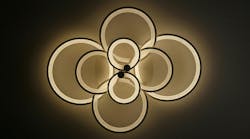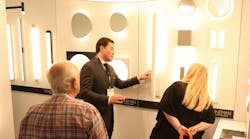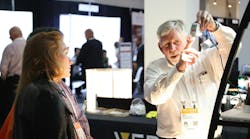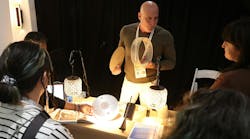For a great primer on understanding the circadian lighting design feature in version 2 of the WELL Building standard, check out The Lighting Exchange’s AIA-accredited course “Discussing Circadian Lighting and the WELL Building Standard with Marty Brennan” on The Continuing Architect. Marty Brennan is an associate principal and sustainability specialist with ZGF Architects and an advisor for the WELL Building Standard’s light concept. During this 20-minute nano-course (0.5 HSW LU), Brennan breaks down the different requirements and shares some best practices for achieving the elusive, yet increasingly sought-after, Circadian Lighting Design Feature L03 in the WELL Building Standard version 2.0.
The purpose of this lighting feature is to provide building occupants with appropriate exposure to the type of light that can help a person maintain their circadian health and align their circadian rhythm with the day-night cycle. Support of the circadian system has been shown to have tremendous health benefits, which helps to explain why so many architects and lighting designers and even building owners are interested in incorporating circadian-friendly elements into the built environment, but just because it’s popular, doesn’t mean it’s easy.
Historically, this circadian lighting feature has been notoriously difficult to achieve and there are probably a few different reasons for this. First, the discussion of circadian lighting includes new metrics and vernacular that are not widely known in the lighting and design community. For example, the metric used to assess circadian lighting levels in a space is equivalent melanopic lux (EML).
There is also general confusion around the relationship between the spectral power distribution (SPD) of a light source and circadian lighting, and which light sources can be used to reach the circadian lighting threshold. In addition, the exposure thresholds that a design needed to achieve were high.
WELL v2 has made it a little more feasible with lowered thresholds, and courses like this one are helping to demystify the requirements so that design teams can incorporate these considerations into their spaces with confidence. To learn more about achieving the Circadian Lighting Design Feature L03 in WELL v2, visit The Continuing Architect website.
This article appeared in the March 2022 issue of Architectural SSL magazine.





